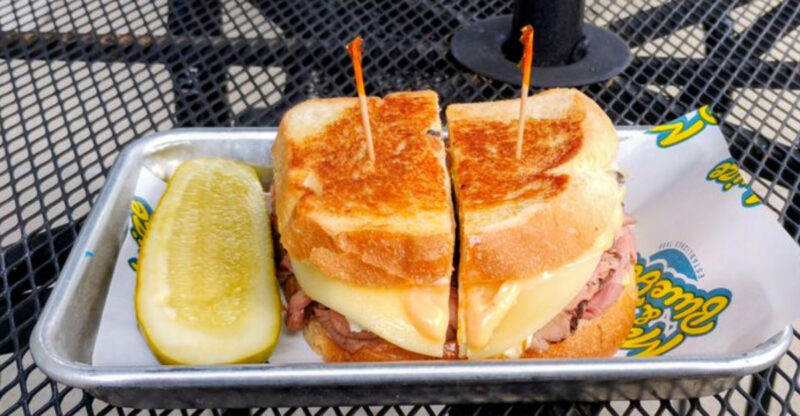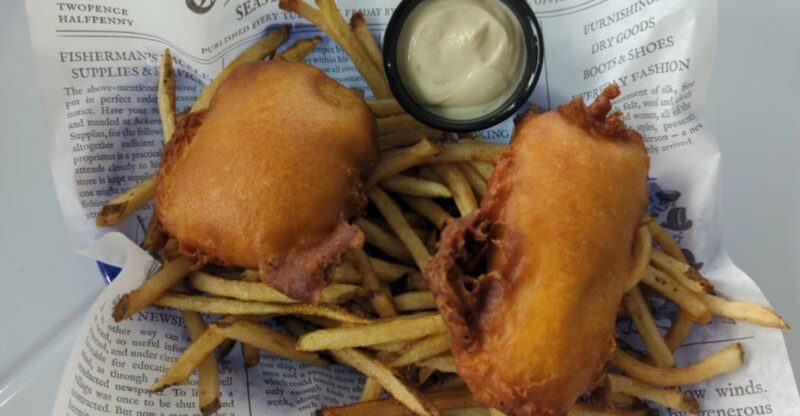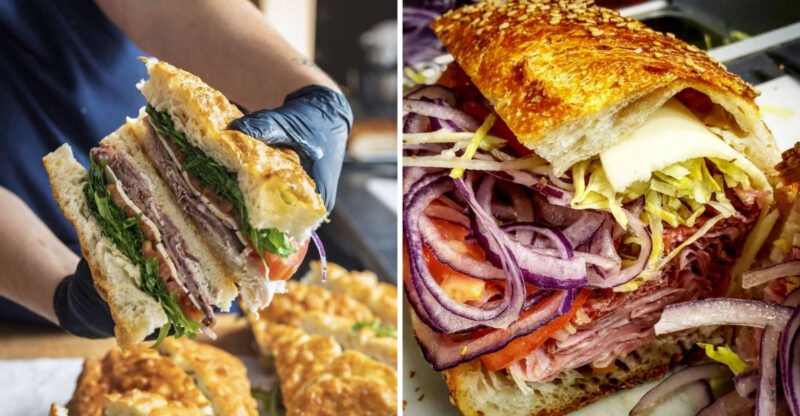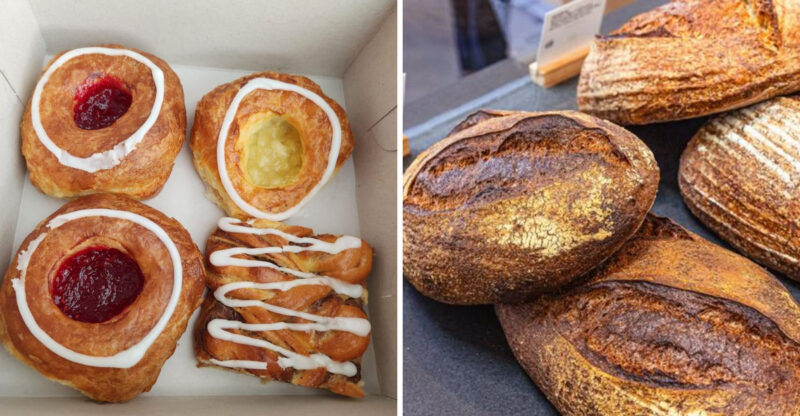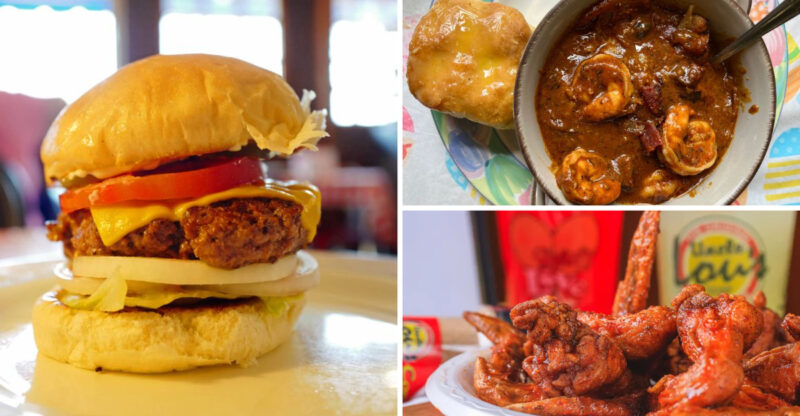14 Georgia Foods Outsiders Can’t Say But Locals Love To Correct
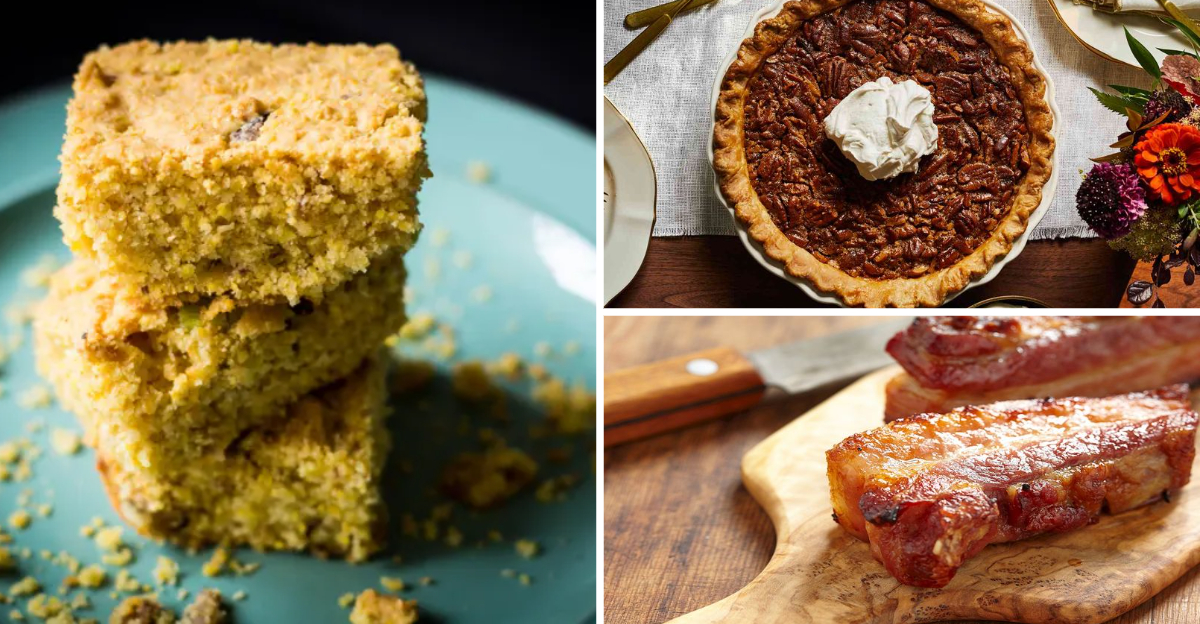
Georgia’s culinary landscape is as rich and distinctive as its Southern drawl, filled with dishes that have been passed down through generations.
Many of these beloved foods come with names that trip up visitors and newcomers, sparking friendly corrections from proud locals who know the proper way to say them.
Whether it’s the emphasis on the wrong syllable or completely mispronouncing a regional specialty, these linguistic missteps are almost a rite of passage for anyone exploring Georgia’s food scene.
1. Brunswick Stew
Visitors often stumble over this classic Georgia dish, sometimes saying “Bruns-wick” with equal emphasis or adding extra syllables where they don’t belong. Locals know it’s pronounced “BRUNZ-wik,” with the stress firmly on the first syllable and a quick, almost swallowed second part.
This hearty stew has been simmering in Georgia pots for generations, combining pulled pork or chicken with lima beans, corn, and tomatoes in a thick, smoky mixture. The debate over its exact origins continues between Georgia and Virginia, but Georgians claim it proudly as their own.
2. Pralines
Candy shops throughout Georgia sell these sweet confections, but visitors often mangle the name by saying “PRAY-leens” instead of the correct “PRAW-leens.” The French origin of this treat explains the unusual pronunciation that doesn’t quite follow standard English rules.
Made from sugar, cream, butter, and pecans, pralines require precise timing and temperature control to achieve that perfect creamy-yet-grainy texture. Too hot or too cool, and the whole batch could turn into a sticky disaster or a crumbly mess.
3. Hoppin’ John
New Year’s Day in Georgia means a plate of this traditional dish, though newcomers sometimes call it “Hopping John” with the -ing fully pronounced. Locals know it’s “HOPP-in John,” with the g dropped in true Southern fashion and a rhythm that flows naturally off the tongue.
Black-eyed peas, rice, onions, and pork come together in this humble yet meaningful dish that’s believed to bring good luck and prosperity for the coming year. The peas represent coins, while the greens served alongside symbolize paper money.
4. Chitlins (Chitterlings)
Perhaps no Georgia food causes more pronunciation confusion than this soul food staple. Outsiders who see the full word “chitterlings” might attempt “CHIT-ter-lings,” but locals always shorten it to “CHIT-linz” or sometimes just “chitlins” in casual conversation.
These cleaned and cooked pig intestines carry deep cultural significance in African American Southern cuisine, representing resourcefulness and tradition passed down through generations. Preparation requires thorough cleaning and long, slow cooking to achieve the right texture and flavor.
5. Boiled Peanuts
Roadside stands throughout Georgia sell these salty, soft treats, but visitors often ask for “boyled” peanuts with two syllables instead of the proper Southern single-syllable “bald” or “biled” peanuts. The casual, relaxed pronunciation matches the laid-back nature of this quintessential Georgia snack.
Green peanuts get boiled for hours in heavily salted water until they transform from crunchy to tender, creating a texture that surprises first-timers expecting the roasted version. Some vendors add Cajun spices or hot peppers to create spicy variations that loyal customers seek out specifically.
6. Pimento Cheese
This Southern spread gets butchered by outsiders who say “pimento” with a long “i” sound like “pie-MENT-oh” instead of the correct “pih-MEN-toh” with short vowels throughout. The mispronunciation immediately marks someone as unfamiliar with this Georgia staple that appears at nearly every gathering.
Shredded cheddar cheese, mayonnaise, and chopped pimentos blend into a creamy spread that Southerners call “the pâté of the South.” Recipes vary wildly, with some families adding cream cheese, hot sauce, or special seasonings they guard like state secrets.
7. Benne Wafers
Savannah’s famous cookies confuse visitors who might say “BEN-ee” or even “bean” wafers, but locals know these delicate treats are pronounced “BEN-ay” wafers. The West African word “benne” refers to sesame seeds, which enslaved people brought to Georgia centuries ago and incorporated into their cooking.
These thin, crispy cookies combine toasted sesame seeds with butter, sugar, and flour to create a delicate snap and nutty flavor that’s distinctly different from typical cookies. The recipe has been preserved and passed down through Gullah Geechee communities along the Georgia coast.
8. Cracklin’ Cornbread
The name itself teaches proper pronunciation, though newcomers sometimes say “CRACK-ling” with a hard g sound instead of dropping it to “CRACK-lin” like locals do. Those crispy bits of fried pork skin mixed into cornbread batter create a savory, crunchy texture that elevates ordinary cornbread to something special.
Traditional Georgia cooks make cracklings by rendering pork fat until the skin becomes golden and crispy, then fold these crunchy pieces into cornbread batter before baking in a hot cast iron skillet. The result combines the sweet corn flavor with salty, porky richness in every bite.
9. Cathead Biscuits
First-time visitors hearing about these enormous biscuits sometimes pause, wondering what cats have to do with breakfast bread. The name simply refers to their size – as big as a cat’s head – though the pronunciation stays straightforward as “KAT-hed BIS-kits” without any tricks or regional variations.
Unlike dainty tea biscuits, cathead biscuits are substantial, hand-formed rounds of dough that rise tall and fluffy in the oven. Cooks shape them by hand rather than using cutters, creating rustic, irregular shapes that some say resemble a cat’s head from certain angles.
10. Kudzu Jelly
Outsiders unfamiliar with the South’s most notorious invasive plant often say “KOOD-zoo” or “kud-ZOO,” but Georgians pronounce it “KUD-zoo” with equal emphasis on both syllables. This vine that blankets telephone poles, abandoned buildings, and entire forests throughout Georgia actually produces fragrant purple blossoms that can be transformed into jelly.
Making kudzu jelly involves harvesting the grape-scented flowers in late summer, steeping them to extract flavor, then cooking the liquid with sugar and pectin. The result tastes floral and slightly grape-like, turning the state’s biggest agricultural nuisance into something surprisingly delicious.
11. Fatback
This cut of pork fat confuses some visitors who overthink the pronunciation, but it’s simply “FAT-back” exactly as it’s spelled – the fat from the back of the pig. Traditional Southern cooking relies heavily on fatback for flavoring vegetables, beans, and greens, rendering it down to create that distinctive rich taste.
Cured fatback can be sliced thin and fried until crispy, similar to bacon but with less meat and more fat. Many Georgia cooks keep fatback in the refrigerator or freezer, cutting off chunks as needed to season pots of collards, green beans, or black-eyed peas.
12. Lowcountry Boil
Coastal Georgia’s signature seafood feast goes by several names, but outsiders sometimes mispronounce it as “Low Country” with two distinct words instead of running them together as “LOW-kun-tree” in typical Southern speech. Some folks call it Frogmore Stew, though that name comes from South Carolina and might spark friendly debate with Georgia locals.
Shrimp, smoked sausage, corn on the cob, and potatoes boil together in a huge pot seasoned with Old Bay or similar spice blends. When everything’s cooked, the whole mixture gets dumped onto newspaper-covered tables for communal eating without plates or utensils.
13. Ambrosia Salad
Holiday tables throughout Georgia feature this sweet, fruity dish, though the pronunciation trips up some folks who say “am-BRO-zee-uh” instead of the more common Georgia pronunciation “am-BRO-zhuh” with a softer ending. The name comes from Greek mythology, referring to the food of the gods, which seems fitting for this beloved Southern treat.
Mandarin oranges, pineapple chunks, shredded coconut, mini marshmallows, and sour cream or whipped cream combine into a sweet, creamy mixture that’s technically called a salad but tastes more like dessert. Some recipes add maraschino cherries, pecans, or bananas depending on family tradition.
14. Pecan Pie
The pronunciation battle over this Southern dessert staple reveals who’s from Georgia and who isn’t within seconds. Outsiders frequently say “pee-CAN,” which makes locals wince and quickly offer a gentle correction to “puh-KAHN” or sometimes “PEE-can” with the emphasis on the first syllable.
Georgia produces more pecans than almost any other state, making this pie a point of particular pride. The filling combines the native nuts with butter, eggs, and syrup to create that signature sweet, sticky texture everyone craves.


